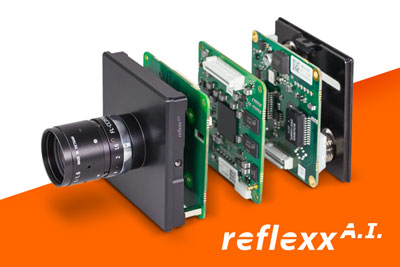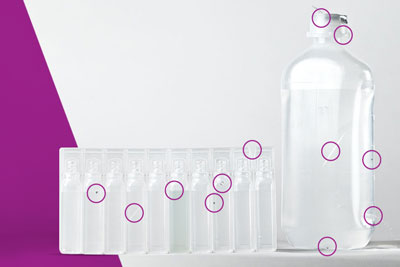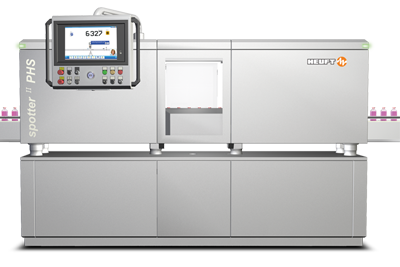Multi Color Image Processing: now it is getting colorful!
Self-invented and already proven in practice: HEUFT puts products and primary packaging materials to be inspected in the right light with the innovative MCIP image processing solution.
Each product has specific characteristics which have to be taken into consideration during an inspection. This applies in particular to primary containers used by the pharmaceutical industry with their wide range of different materials and formats. Accordingly, it is challenging to optimally match image processing to their typical characteristics as well as to the defects that absolutely must be detected. And to do this as cost-effectively as possible, saving time, energy and space, with less effort, equipment and components.
Our newly developed Multi Color Image Processing (MCIP), for which a patent application was filed in early February 2022, masters these challenges – thanks to a novel combination of universally controllable lighting scenarios in different colors with smart image processing algorithms!
Putting containers in the best possible light
Originally developed for the HEUFT spotter II BFS devices for the 100% all-round inspection and integrity check of filled blow-fill-seal ampoules and infusion bottles the innovative procedure has already proven its impressive detection accuracy in different customer installations and is now also finding its way into other HEUFT inspection systems in order to present the most varied containers in the best possible light.
MCIP is directly integrated into our intelligent HEUFT reflexx A.I. camera and combines different illumination principles such as bright field and dark field illumination in reflected and transmitted light at only one inspection station. Each type of illumination used is designed in a different color, so that the resulting information can be spectrally separated from one another as it progresses.

Running through different scenarios at once
As our example of a blow-fill-seal infusion bottle shows, a wide variety of features and properties can be extracted from just a single image by smart calculation of the individual color channels.
Where up to now transmitted and reflected light applications were only possible with several cameras at different positions from different perspectives this can now all be achieved in a resource-saving and space-saving manner with only one detection unit: the HEUFT reflexx A.I. camera obtains all the information at once on the spot and calculates it with each other with pixel accuracy so that they can be correlated considerably better.
Simply detecting more
The following detection and feature images which were created using the MCIP during the complete inspection of vials with liquid or lyophilized pharmaceutical ingredients illustrate what this achieves:

Identifying particles and inclusions
Thanks to specific illumination principles, MCIP makes it possible, on the one hand, to reliably identify defects such as particles inside the vial or inclusions in the glass even if they are located in the filling line area that is difficult to see.
And on the other hand, such critical defects can be clearly distinguished with MCIP from harmless objects such as product adhesions or water droplets on the inner walls of the injection vial without additional classification.

Inspecting vial crimp caps reliably
In the case of crimp cap inspection, MCIP provides a new dimension in detection accuracy.
Interfering structures such as scratches on the crimped edge are just as clearly detected as faulty or incomplete crimping directly underneath, so that vials that are not securely closed can always be reliably rejected.

Making the smallest contaminants visible
During the optical detection of particles in the vial, MCIP achieves particularly homogeneous illumination for full detection reliability. The smallest foreign objects on the Lyo cake simply become more clearly visible. The contaminant is already well to see on the detection image.
Thanks to smart image processing algorithms, this results in a feature image on which interfering container and product structures recede into the background, allowing the tiny particle to be located very precisely.

Detecting black spots and foreign bodies
And when inspecting blow-fill-seal ampoule strips, MCIP detects even the smallest black spots burned into the plastic or foreign bodies inside these primary packagings.
Matched to their specific characteristics as well as to all possible critical defects that must be detected, the innovative image processing method simply puts every primary container in the right colored light!





